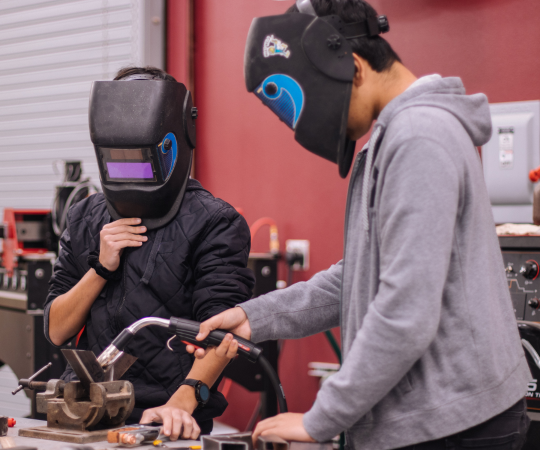Aluminum Welding Techniques: From Beginner to Pro
Introduction
Aluminum welding is a skill that can open doors to various applications, from custom metal fabrication to intricate projects in the automotive and aerospace industries. As lightweight and corrosion-resistant materials become more popular, knowing how to weld aluminum effectively is crucial for both beginners and seasoned professionals. In this comprehensive guide, we will explore aluminum welding techniques that cater to all skill levels—from novice welders eager to learn the ropes to experienced fabricators looking to refine their skills. So gear up as we delve into the fascinating world of aluminum welding!
Aluminum Welding Techniques: From Beginner to Pro
When it comes to aluminum welding techniques, there’s a lot more than meets the eye. While it may seem straightforward, several variables come into play that can affect the quality and durability of your welds. Understanding these nuances is vital for anyone serious about entering the world of welding.
The Basics of Aluminum Welding
What is Aluminum Welding?
Aluminum welding refers to the process of joining pieces of aluminum together using heat and filler material. Unlike traditional steel welding, aluminum requires specific techniques due to its unique properties.
Why Choose Aluminum?
Aluminum is lightweight yet strong, making it an ideal choice for various applications. Its resistance to corrosion also adds longevity, making it a cost-effective option in the long run.
Types of Aluminum Welding Processes
TIG Welding (GTAW)
- What It Is: Tungsten Inert Gas (TIG) welding uses a non-consumable tungsten electrode.
- Pros & Cons: Offers high precision but can be slow and requires skill.
- Best For: Thin materials and delicate applications.
MIG Welding (GMAW)
- What It Is: Metal Inert Gas (MIG) welding uses a consumable wire electrode.
- Pros & Cons: Faster than TIG but may produce less precise welds.
- Best For: Thick materials and general-purpose applications.
Stick Welding (SMAW)
- What It Is: Shielded Metal Arc Welding (SMAW) uses a consumable electrode coated in flux.
- Pros & Cons: Versatile but not commonly used for aluminum.
- Best For: Outdoor work or repairs where portability is essential.
Essential Equipment for Aluminum Welding
Welding Machine
Choosing the right machine is crucial for effective aluminum welding. You’ll want one that offers adjustable settings for amperage and voltage.
Filler Materials
Different alloys exist for aluminum filler rods; choosing the right one depends on your base metal’s composition.

Personal Protective Equipment (PPE)
Safety should never be compromised! Always wear goggles, gloves, and protective clothing when welding.
Pre-Welding Preparation Steps
Cleaning Aluminum Surfaces
Before you start welding, ensure that all surfaces are clean from oil, dirt, or oxidation. A simple wipe-down with acetone usually does the trick.
Joint Design Considerations
Understanding how different joint designs affect your weld strength is essential. Options include butt joints, lap joints, and corner joints.
Techniques for Effective Aluminum Welding
Setting Up Your Workspace
A clutter-free workspace aids concentration and safety—make sure everything you need is within reach before starting.
Understanding Heat Input
Managing heat input is critical when working with aluminum. Too much heat can cause warping or burn-through while too little can lead to weak joints.
Tips for Beginners in Aluminum Welding
Even if you're just starting out with aluminum welding techniques, following some practical tips can help you achieve better results:
ol2ol2/hr8hr8/ Common Challenges in Aluminum Welding
Even seasoned pros face hurdles during aluminum welding processes:
Each challenge has specific solutions worth investigating if you want high-quality results.
ol4ol4/hr10hr10/ Maintenance of Equipment
Proper maintenance extends the life of your equipment:
Doing so helps avoid breakdowns during critical projects!
FAQs About Aluminum Welding Techniques
1. What type of welder should I buy for aluminum?
You should consider purchasing either a TIG or MIG welder based on your project requirements; TIG offers precision while MIG provides speed.
2. Can I use regular steel filler rods on aluminum?
No! Using steel rods will compromise your weld's integrity; always opt for dedicated aluminum filler rods instead.
3. How do I prevent warping when welding?
Controlling heat input by using proper travel speed and employing backing bars can significantly reduce warping risks during the process.
4. Why does my weld keep cracking?
Cracking often results from improper heat management or contamination; ensuring cleanliness before starting is key!
5. What's the best way to clean aluminum before welding?
Using acetone or dedicated cleaning solutions works wonders; make sure surfaces are free from oil or oxidation before proceeding!
6. How can I improve my technique over time?
Frequent practice combined with studying advanced techniques will help elevate your skills—don’t shy away from seeking feedback!
Conclusion
Mastering aluminum welding techniques isn't just a skill—it's an art form that opens up numerous possibilities in custom metal fabrication industries and beyond! Whether you're just dipping your toes into this field or you're already well-versed in its intricacies, there's always room for improvement and learning new tricks along the way.
With this guide at hand—from beginner tips through advanced methods—you’re now equipped with knowledge that’ll enhance both your understanding and capabilities in aluminum welding! So what are you waiting for? Grab your gear and start creating something remarkable today!